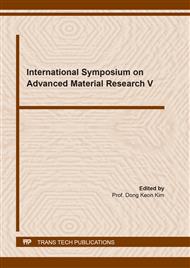p.35
p.43
p.53
p.63
p.71
p.79
p.87
p.93
p.101
Stiffness Modulus of Aged Asphalt Mixtures
Abstract:
Asphalt mixtures have a dominant position in road construction in most countries. The choice of asphalt mixture type and surface depends mainly on the traffic loading and climatic conditions. The stiffness of asphalt mixture is one of important parameters that determines how road pavement performs and what pavement response to traffic loading. The stiffness modulus of the asphalt mixture changes during its service life, it tends to increase. During this process the mixtures in pavement age and degrade. Aging of asphalt mixtures has a significant effect on changes in the properties of individual mixtures. Presented research was focused on monitoring the change in the stiffness modulus of two asphalt mixtures AC11 50/70 and AC11 PMB 45/80-75 by the effect of aging. The asphalt mixtures have been exposed to the effects of short-term and long-term ageing by the conditioning of loose mixture method. After aging of the asphalt mixtures, the stiffness modulus of compacted asphalt mixture samples was measured. The stiffness modulus was determined using the IT-CY method at temperature of 10 °C, 20 °C and 30 °C and showed an increase after exposure of the mixture to short-term and long-term aging.
Info:
Periodical:
Pages:
93-100
Citation:
Online since:
March 2022
Authors:
Keywords:
Price:
Сopyright:
© 2022 Trans Tech Publications Ltd. All Rights Reserved
Share:
Citation:


